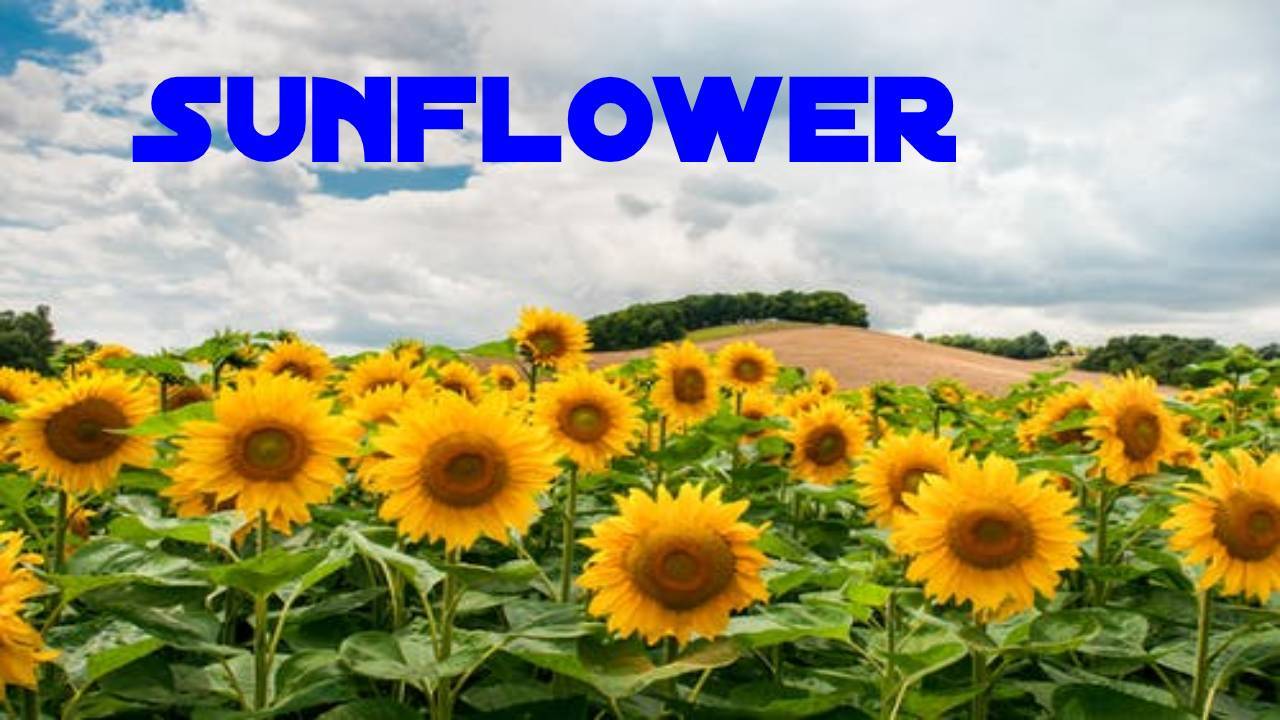Table of Contents
Sunflower Definition
Sunflower is a herbaceous plant of the asteraceous family, with the scientific name Helianthus annuus. It characterizes by yellow flowers, edible fruits, and robust and erect stems.
The sunflower receives this name thanks to the properties that this plant possesses.
It is young, and that allows it to rotate in the direction of the sun’s rays (heliotropism), and in this way, take advantage of its virtues.
However, the sunflower also receives other names such as mirasol, the flower of the sun, tile corn, among others. Likewise, from Nahuatl, it receives the names of chimalxóchitl, which means “shield flower.”
And also the sunflower is a plant native to North and Central America, where it cultivates since ancient times, approximately 3000 years ago.
Then, the cultivation of sunflower spread throughout the world at the beginning of the 16th century, after the colonization process.
It a plant cultivated in many countries thanks to its various nutritional contributions derived from its seeds. Its properties to obtain the oil. On the other hand, sunflowers also use for decorative purposes.
What are the Characteristics of Sunflower?

Below are the main characteristics of sunflowers.
- Firstly it is a herbaceous plant
- And also sunflower grows annually.
- This plant grows up to three meters high.
- It has a robust stem, erect, with hairs and large oval leaves. The stem does not branch.
- It is a plant that has a response to sunlight called heliotropism. Therefore, it can move in the direction of the sun’s rays.
- And also the flowers of the sunflower can measure between 5 and 40 centimeters wide.
- It is a plant that grows if it has the necessary conditions.
- It has various nutritional properties from which sunflower oil and protein-rich flours can obtain.
What is the Life Cycle of Sunflower?
- The life cycle of sunflower is short, approximately six months.
- It begins with the sowing of the seeds at the end of the cold season.
- It is a plant that grows during the warm season.
1. Sowing the Seed
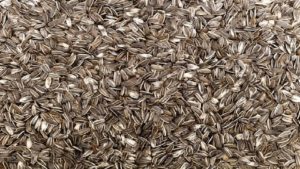
- Firstly its seeds characterize by being cover by a black layer with a cream-colored line.
- Secondly, this layer protects the seed until temperatures and climatic conditions are conducive to germination.
- When this layer opens, the germination process begins.
- It is usually during the spring; in this way, the plant feeds better on sunlight.
2. Germination
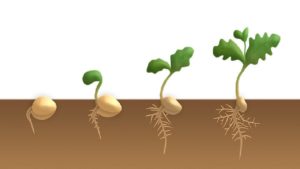
- Firstly sunflower seed germination can take five to ten days.
- Secondly, the seed coat opens, thanks to the humidity of the soil, and the roots begin to sprout.
- The first root that sprouts are the one that anchors profoundly and powerfully and then supports the plant.
- The first stem that grows out of the ground is called the seedling.
3. Plant Growth
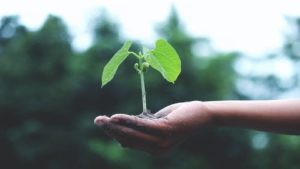
- Sunflower plants have roots that can grow to a meter and a half long.
- It orders to support the large stems of this plant, which can be up to three meters high.
- In this way, the plant is firmly attached to the soil and absorbs the water.
- Its nutrients are necessary for its growth and continuous development.
- As the stem grows, so will the leaves, characterized by having a shape similar to a shovel.
- After 30 days, approximately, the flower button is formed. Which, still unopened, will rotate in the direction of the rays of the sun to receive its light.
- It should remember that sunflowers are plants that depend a lot on sunlight to grow.
- It develops as well as an average temperature of 25 ° C.
4. Flowering
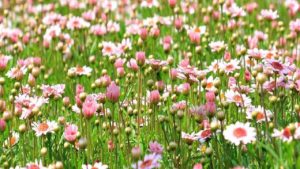
- The sunflower blooms after a month of plant growth, at which time the flower bud forms and also then slowly opens.
- Once the flower bud is open, the yellow petals become visible, the tips of which roll back at the edges.
- After a week, the first petals fell to the ground and replaces others of the same color.
5. Wilting

- Once the growth process is complete, the sunflower drops its petals completely, and also the wilting process begins.
- In this, the flower button shrinks, and seeds form from its central points in the next 30 days.
- These seeds will fall to the ground, from some new sunflower plants born, and others will consume.
6. Regrowth
- New sunflower plants will be born from the seeds that have fallen to the ground.
- They have the necessary environmental conditions.
Seeds of Sunflower
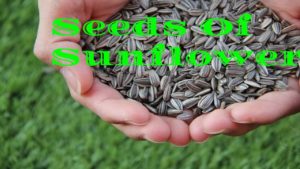
- Sunflower seeds also called pipes.
- It is a food rich in minerals such as phosphorus, potassium, magnesium, and calcium, which provide health benefits.
- They usually consume after a light toast and, in some cases, with salt.
- From the sunflower seed, you can obtain various products thanks to its high percentage of oil.
- Sunflower oil uses for cooking, livestock feed, and also being part of the ingredients of some cosmetics and detergents.
Nutritional Values of Sunflower Seeds
Vitamin B1 (Thiamine): 1.48 mg; B2 (Riboflavin): 0.355 mg; B3 or Vitamin PP: 8,335 mg;
Vitamin B9: 227 μg; J or choline: 55.1 mg; C: 1.4 mg;
Vitamin E: 35.17 mg
Calcium: 78 mg
Magnesium: 325 mg
Iron: 5.25 mg
Phosphorus: 660 mg
Potassium: 645 mg
Sodium: 9 mg
Zinc: 5 mg
How to Eat Sunflower Seeds?
- Sunflower seeds are very versatile in the kitchen. They can use for salads but also rice dishes, vegetable-based dishes, or soups.
- They are great to make homemade bread or other baked goods, such as crackers or homemade breadsticks.
- And also it can also simply grill for a healthy snack or breakfast for both adults and children.
- If they are not salty, they can be used to add to a fruit salad or to decorate a bowl of homemade ice cream.
1. Shelled
- Firstly here is a recipe for taking sunflower seeds without the shell.
- Mix the naturally shelled sunflower seeds (preferably roasted) with different typical breakfast cereals and add them to the milk.
- And also you can also grind them to obtain a powder that can be added to honey, resulting in an energetic and rich cream to spread on bread.
2. Roasted
- Use, the shelled sunflower seeds must roast. How can they be burned? Very simple.
- And also put a non-stick frying pan on the heat, heat it, and add a handful of sunflower seeds. Attention! All sunflower seeds should come into contact with the pan.
- Lower the heat to a minimum and toast for a couple of minutes, “peeling” once, after the first sixty seconds.
- In practice, to roast the seeds, you have to “cook” them in a non-stick frying pan for 2 minutes, “turning them over” halfway through cooking.

